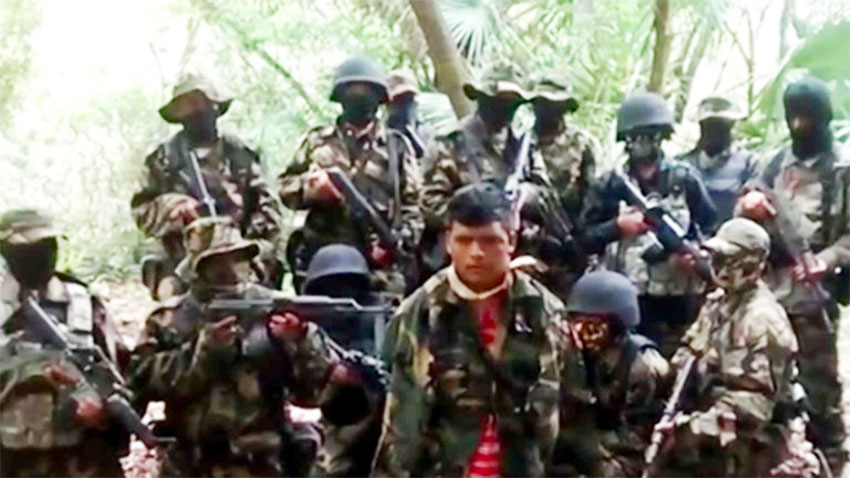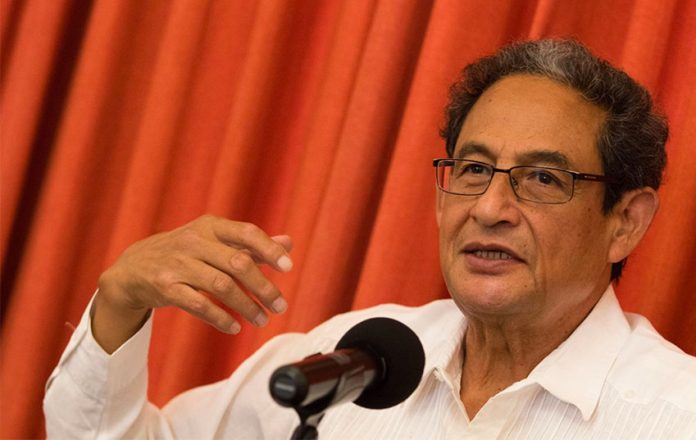In 2012, there were 1,060 homicides in the Comarca Lagunera region of Coahuila and Durango that encompasses several cities including Torreón and Goméz Palacio and is commonly known as La Laguna.
But in 2018, there were just 139 homicides, a reduction of 87% compared to six years earlier.
A new book titled Reconquistando La Laguna (Reconquering La Laguna) examines the multi-faceted security strategy that was implemented in the region and was ultimately successful in significantly reducing violence.
Its authors, who describe the La Laguna initiative as the “most successful experience in the construction of peace in Mexico,” say that the security model could serve as an example for governments in other parts of the country.
First some context.
Between 2006 and 2014, La Laguna was the focus of a vicious turf war between the Sinaloa Cartel – led by notorious drug lord Joaquín “El Chapo” Guzmán at the time – and Los Zetas, which began as the armed wing of the Gulf Cartel but subsequently struck out on its own.
In La Laguna, Los Zetas used particularly aggressive tactics to assert itself, designing a “strategy to terrorize the entire population,” according to the book, written by the academics Sergio Aguayo and Jacobo Dayán with the collaboration of Javier Garza.
The cartel recruited police and military commanders to its ranks by giving them the option to accept their bribes or pay with their lives (the so-called plata o plomo, or money or lead, approach), the book says, and frequently kidnapped local businessmen.
Los Zetas, which arrived in La Laguna in 2003 or 2004, was not just involved in drug trafficking in the region – located on a smuggling route between the Pacific coast and the United States – but a range of other illicit activities including money laundering and extortion.
Mainly due to its turf war with the Sinaloa Cartel, there were 3,941 homicides in La Laguna between 2008 and 2014 and there were 463 abductions in the same period.
The central aim of the security strategy implemented in the area was to put an end to the criminal operations of Los Zetas.

That strategy was beneficial to the interests of federal, state and municipal governments, the United States – and the Sinaloa Cartel, Aguayo said in an interview. But the Zetas were seen as the more violent of the two.
“There was a confluence of interests. … It was decided to behead the cartel that was perpetrating more violence,” he said.
All three levels of government and the local business community contributed to defeating Los Zetas in La Laguna and thus reducing the violence of which the cartel was the main instigator, the book says.
The Coahuila state government led by former governor Rubén Moreira – now a deputy in the federal Congress – played a key role, the book contends.
Once Moreira’s government took office in late 2011, “passivity disappears,” it says. “Los Zetas were contained, beheaded and fragmented.”
The book identifies a number of government actions that contributed.
Police forces were cleansed of corrupt officers, paving the way for the creation of more professional and trustworthy forces and a strategy was developed that sought to attack organized crime’s economic and social structures.
Slot machines were banned, there was a crackdown on the sale of illegal alcohol and casinos were shut down because cartels, especially Los Zetas, were collecting extortion payments from them. Cock fights and horse races were outlawed, strip clubs were shut down and gas stations, which were owned by and/or laundering money for the Zetas, were subjected to strict audits.
In the cultural realm, public altars to Santa Muerte (Holy Death) – worshipped by many drug traffickers and other criminals – were destroyed and narcocorridos (narco ballads) were taken off the airwaves.
Authorities also urged citizens to report crime and implemented strategies designed to create jobs and encourage people to play sports.
The local business community also played a fundamental role in reducing violence in La Laguna, the book authors concluded.
Business people in Coahuila and Durango were behind three large-scale projects whose aim was to stamp out organized crime: the creation of a metropolitan police force in La Laguna, the establishment of a metropolitan anti-kidnapping organization and the formation of civil society association that monitors the local situation and seeks to hold authorities to account.

The metropolitan police force, made up of federal police and state officers from Coahuila and Durango working under a military command, “worked because it solves problems associated with the conflict created by the different [cartel] rivalries,” the book says.
Apart from providing military personnel and Federal Police to the metropolitan force, the federal government helped bring peace to La Laguna by establishing a new intelligence center in Monterrey, Nuevo León – located about 340 kilometers east of Torreón – whose main focus was combatting Los Zetas.
The overall strategy was effective in significantly reducing violence in La Laguna, the authors concluded, but it was by no means perfect.
Dayán said that impunity remained, and remains, a problem and that more still needs to be done to investigate police protection of organized crime and to track money generated by illicit activities in the area.
“Where did Los Zetas funds end up?” he asked.
However, there is a consensus that the achievements of the security model outweigh its flaws. Aguayo said the model is not a one-size-fits-all strategy, acknowledging that local security conditions and characteristics must dictate a plan to combat criminal activity.
But there are a lot of lessons to be learned from the strategy.
Aguayo said that political will of all three levels of government, coordination between them and the willingness of the government to listen to society were part of the model implemented in La Laguna and could be part of successful formulas elsewhere.
The academic said that he and his colleagues are now carrying out studies about the crime situation and social fabric in Mexico City with the aim of developing a strategy that could work in the nation’s capital, where a number of organized crime groups operate.
“We’re going to see what the formula could be here,” Aguayo said, adding that the Laguna approach outlined in his book will inform the process.
Source: Animal Político (sp), Reforma (sp)
